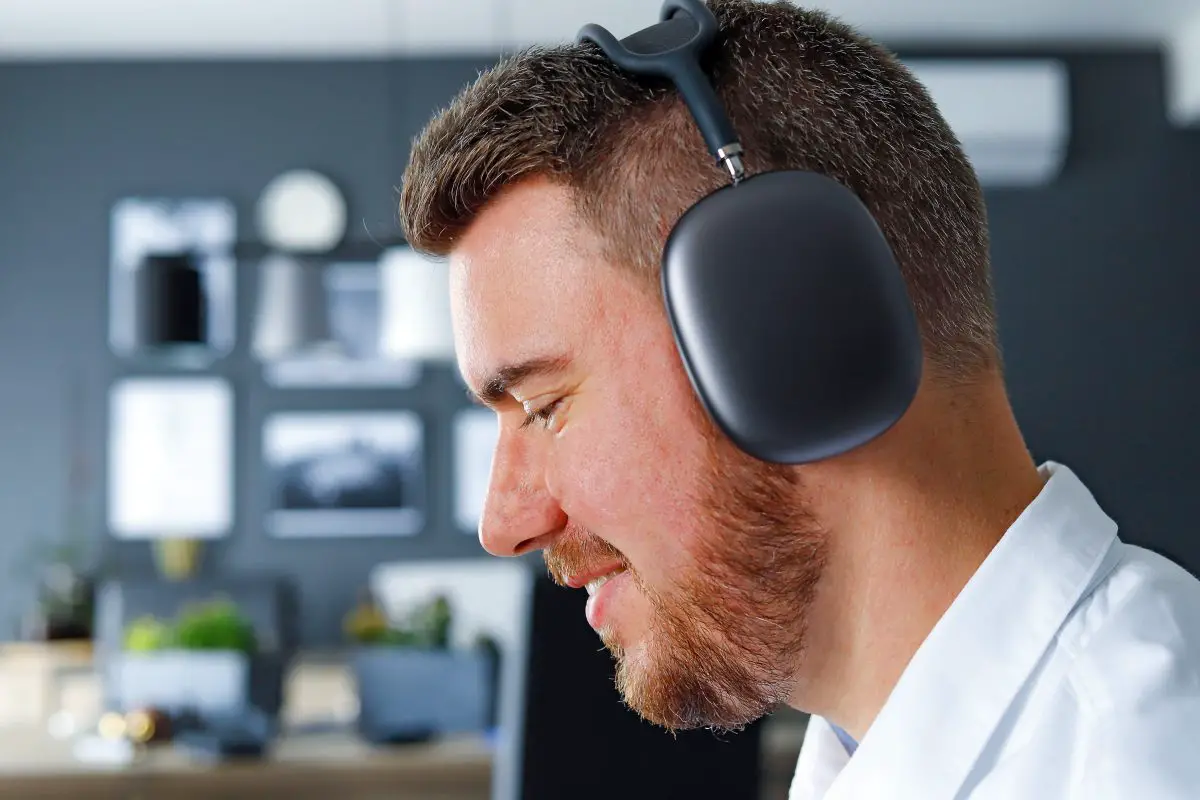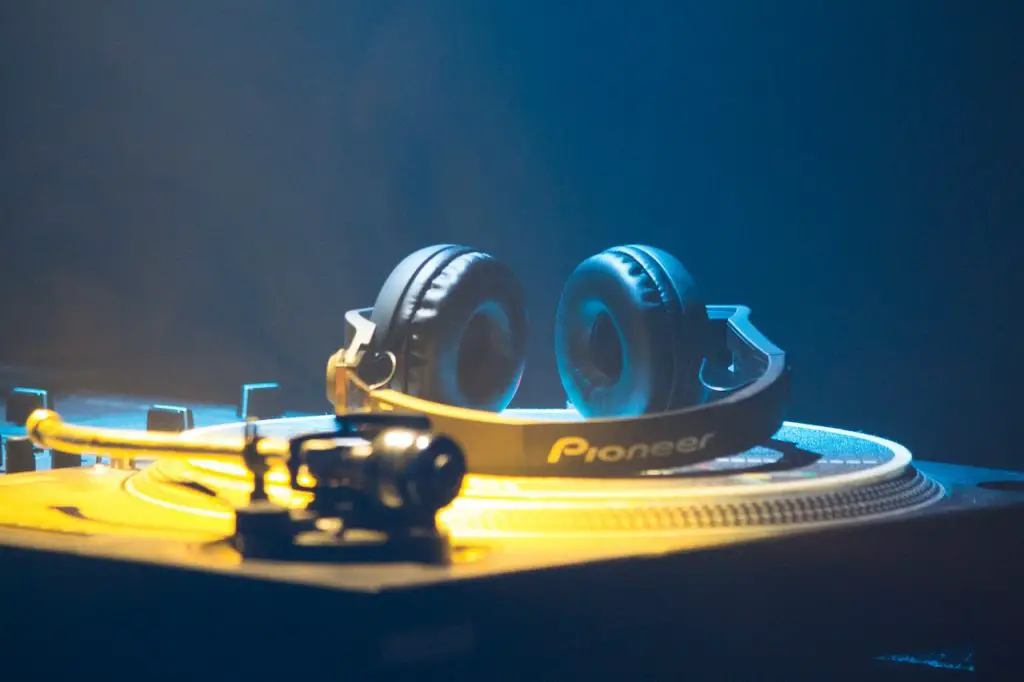Do you often wear headphones to block out the noise of the world? If so, you’re not alone. Noise-canceling headphones are becoming increasingly popular, not just for people trying to concentrate in quiet environments but for people trying to avoid being disturbed. Have you ever wondered how noise-canceling headphones work?
In this post, we’ll discuss what noise-canceling headphones are and how they can eliminate noise from your environment. We’ll also show you the different types of noise-canceling settings that you may find in the market. Ready to jump in? Gear up, and let’s get started!
How do noise-canceling headphones work? Active noise-canceling headphones have small microphones inside (and sometimes outside) the earcups. These microphones can analyze the sound coming in and instantly make the opposite sound through the headphones’ drivers. The sound level drops because the air molecules move less rapidly due to the competing forces.
What are noise-canceling headphones?
Noise-canceling headphones have the technology to actively reduces background noise, allowing you to listen to music or other sounds uninterrupted. The tiny engine inside listens to the low frequencies in your environment (through a mic on the outside of the ear cup) and makes an opposite frequency to cancel out the noise.

This removes that sound before it enters the ear pads and tries to sneak into your mix. Most noise-canceling devices use soundproofing for higher-frequency noises, which blocks out most of the higher frequencies, or they use a combination of soundproofing and noise cancellation.
AKAI Professional MPK Mini MK3

AKAI Professional MPK Mini MK3
How does noise canceling work?
Phase inversion is what your headphones use to make “anti-noise,” which cancels out the sounds around you. When two similar waves are stacked on top of each other and lined up so that their peaks and troughs match (louder sound), they make a bigger wave.
Creating effective anti-noise using phase inversion can be a challenging task. The process requires precise timing and synchronization between the microphone and the headphone drivers…
Headphones equipped with noise-canceling technology use built-in microphones to detect ambient noise and then generate an inverted copy of the noise with the same amplitude but opposite phase. The inverted noise is then added to the audio signal, resulting in the cancellation of the ambient noise.
Creating effective anti-noise using phase inversion can be a challenging task. The process requires precise timing and synchronization between the microphone and the headphone drivers, as well as careful tuning of the anti-noise signal to ensure it cancels out the ambient noise without affecting the desired audio signal.
Noise cancellation types
If you are looking into buying your first pair of noise-canceling headphones, consider the type of noise cancellation that it has. There are two main types of noise cancellation in headphones: passive noise cancellation and active noise cancellation (ANC).
Passive noise cancellation involves using physical barriers to block out external noise, such as using ear cups or foam tips to create a seal around the ear. On the other hand, active noise cancellation (ANC) uses electronic components to cancel out external noise.
ANC headphones have a small microphone on the outside that picks up external sounds, which are then analyzed by the headphone’s electronic components. The headphone generates an inverse sound wave that effectively cancels out the external noise before it reaches the listener’s ears.
ANC technology has evolved significantly in recent years, and manufacturers are producing headphones that can effectively block out noise while providing excellent sound quality. Some examples of headphones with ANC include the Apple AirPods Max, the Beats Fit Pro, and the Sennheiser Momentum 4 Wireless.

Benefits of noise-canceling headphones
Noise-canceling headphones, whether active or passive, create an atmosphere free of ambient noise and distractions, which is difficult to do in everyday life. Here are some benefits of investing in a pair of noise-canceling headphones:
1. It lets you focus better
If you’re the type of person that gets easily distracted by the noise around you, wearing noise-canceling headphones will definitely help. High-quality noise-canceling headphones are required to block out almost all of those sounds. This leaves you in acoustic isolation, where you can focus on your music and your music alone without compromising on anything.
2. It may prevent hearing loss
Another benefit of noise-canceling headphones is their ability to reduce the risk of hearing damage. Noise-canceling headphones can prevent users from having to turn up the volume on their devices to dangerous levels in order to hear the audio over external noise. This is particularly important for people who use headphones for extended periods of time.
3. It has improved sound quality
Another advantage of noise-canceling headphones is that they can improve sound quality. By reducing background noise, noise-canceling headphones allow users to hear music, movies, or phone calls more clearly, even at lower volumes.
4. It gives a comfortable listening experience
Noise-canceling headphones are designed to be comfortable to wear for extended periods of time. They often come with soft earpads and adjustable headbands that distribute weight evenly, reducing pressure on the ears and head. This makes them ideal for people who need to wear headphones for several hours at a time, whether for work or leisure.
If you want even more tips and insights, watch this video called “How Noise-Canceling Headphones Work” from the Insider Tech YouTube channel.
Frequently asked questions (FAQ)
Do you still have questions about how noise-canceling headphones work? Below are some of the most commonly asked questions.
Are noise-canceling headphones safe?
Using noise-canceling headphones is generally safe, but it’s essential to use them in moderation and take regular breaks to avoid overexposure to noise and minimize any potential risks.
Can you listen to silence with noise-canceling headphones?
Even if you’re not listening to music, noise-canceling headphones will still provide a peaceful environment. However, they are not without restrictions. While these headphones do an excellent job of blocking out ambient noise while music is playing, their shortcomings become more evident when music isn’t being played.
Can ANC headphones block out all sound all of the time?
No, active noise-canceling (ANC) headphones cannot completely block out all sounds at all times. ANC headphones are designed to attenuate or reduce ambient noise, primarily low-intensity and low-frequency sounds, but they cannot eliminate all surrounding sounds. The best attenuation of noise that ANC headphones can provide is around -25 dB in the first 1000 Hz, which translates to a reduction of ambient intensity by 60-70%, but this is still not enough to get rid of all sounds
Conclusion
And there you have it, folks! We can say that these headphones have not just changed the way we listen to music but also improved our overall quality of life. Noise-canceling headphones do a great job of keeping you comfortable while blocking out outside noise.
So, do you prefer to use noise-canceling headphones? And did I cover everything you wanted to know? Let me know in the comments section below (I read and reply to every comment). If you found this article helpful, share it with a friend, and check out my full blog for more tips and tricks on music production. Thanks for reading, and never stop making music.
Key takeaways
This article covered how noise-canceling headphones work. Here are some key takeaways:
- Noise-canceling headphones have the technology that actively blocks background noise so you can listen to music or other audio without interruption.
- Noise-canceling headphones use phase inversion to create “anti-noise,” effectively canceling out the sounds around you.
- There are two main types of noise cancellation in headphones: passive noise cancellation and active noise cancellation (ANC).
- The benefits of using noise-canceling headphones include helping you focus better, improved sound quality, and reduced risk of hearing damage.















